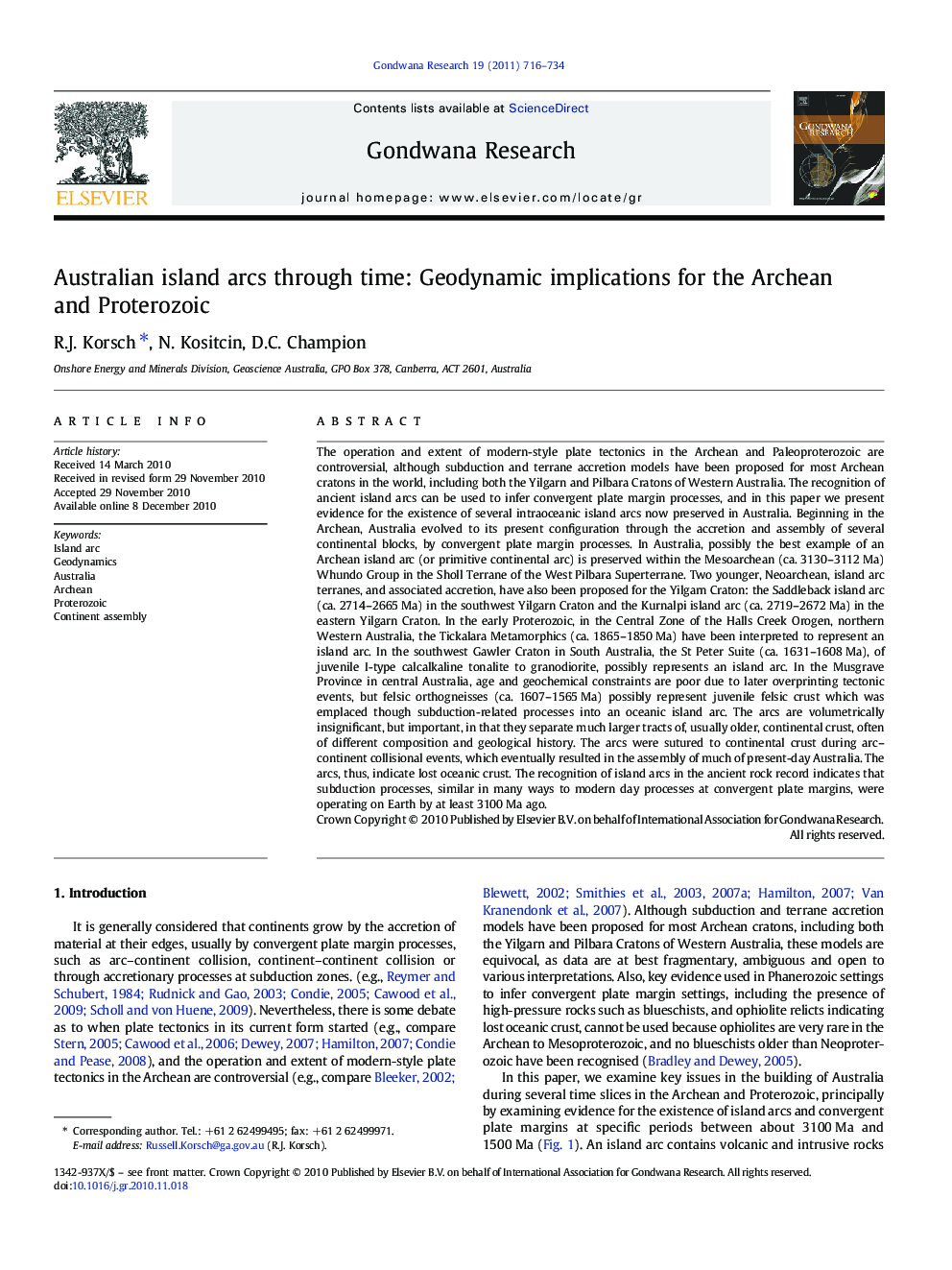| کد مقاله | کد نشریه | سال انتشار | مقاله انگلیسی | نسخه تمام متن |
|---|---|---|---|---|
| 4727211 | 1356365 | 2011 | 19 صفحه PDF | دانلود رایگان |

The operation and extent of modern-style plate tectonics in the Archean and Paleoproterozoic are controversial, although subduction and terrane accretion models have been proposed for most Archean cratons in the world, including both the Yilgarn and Pilbara Cratons of Western Australia. The recognition of ancient island arcs can be used to infer convergent plate margin processes, and in this paper we present evidence for the existence of several intraoceanic island arcs now preserved in Australia. Beginning in the Archean, Australia evolved to its present configuration through the accretion and assembly of several continental blocks, by convergent plate margin processes. In Australia, possibly the best example of an Archean island arc (or primitive continental arc) is preserved within the Mesoarchean (ca. 3130–3112 Ma) Whundo Group in the Sholl Terrane of the West Pilbara Superterrane. Two younger, Neoarchean, island arc terranes, and associated accretion, have also been proposed for the Yilgarn Craton: the Saddleback island arc (ca. 2714–2665 Ma) in the southwest Yilgarn Craton and the Kurnalpi island arc (ca. 2719–2672 Ma) in the eastern Yilgarn Craton. In the early Proterozoic, in the Central Zone of the Halls Creek Orogen, northern Western Australia, the Tickalara Metamorphics (ca. 1865–1850 Ma) have been interpreted to represent an island arc. In the southwest Gawler Craton in South Australia, the St Peter Suite (ca. 1631–1608 Ma), of juvenile I-type calcalkaline tonalite to granodiorite, possibly represents an island arc. In the Musgrave Province in central Australia, age and geochemical constraints are poor due to later overprinting tectonic events, but felsic orthogneisses (ca. 1607–1565 Ma) possibly represent juvenile felsic crust which was emplaced though subduction-related processes into an oceanic island arc. The arcs are volumetrically insignificant, but important, in that they separate much larger tracts of, usually older, continental crust, often of different composition and geological history. The arcs were sutured to continental crust during arc–continent collisional events, which eventually resulted in the assembly of much of present-day Australia. The arcs, thus, indicate lost oceanic crust. The recognition of island arcs in the ancient rock record indicates that subduction processes, similar in many ways to modern day processes at convergent plate margins, were operating on Earth by at least 3100 Ma ago.
Graphical AbstractFigure optionsDownload as PowerPoint slideResearch Highlights
► Several Archean and Proterozoic fossil island arcs are recognised in Australia.
► The arcs separate former discrete, blocks of continental lithosphere.
► The arcs contributed to the assembly of Australia.
► Subduction processes were operating in Australia by at least 3100 Ma ago.
Journal: Gondwana Research - Volume 19, Issue 3, April 2011, Pages 716–734